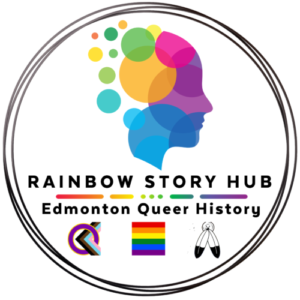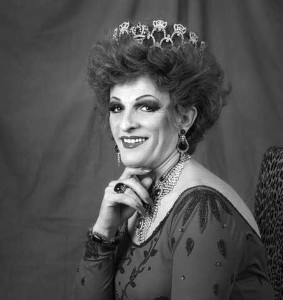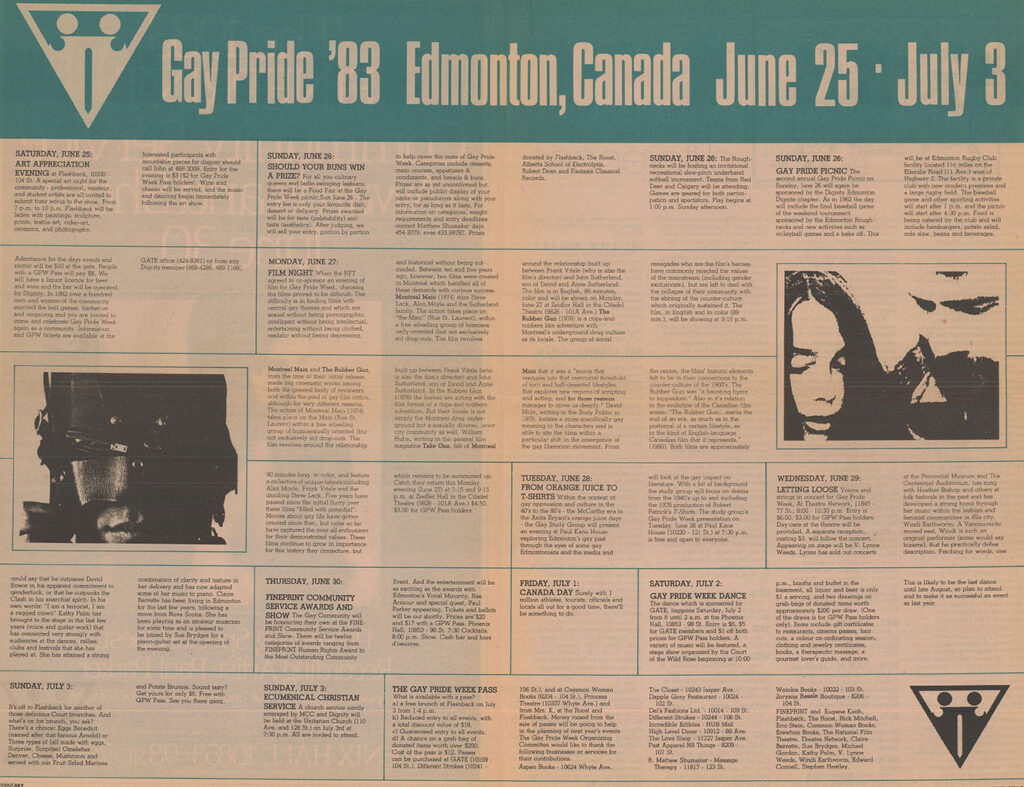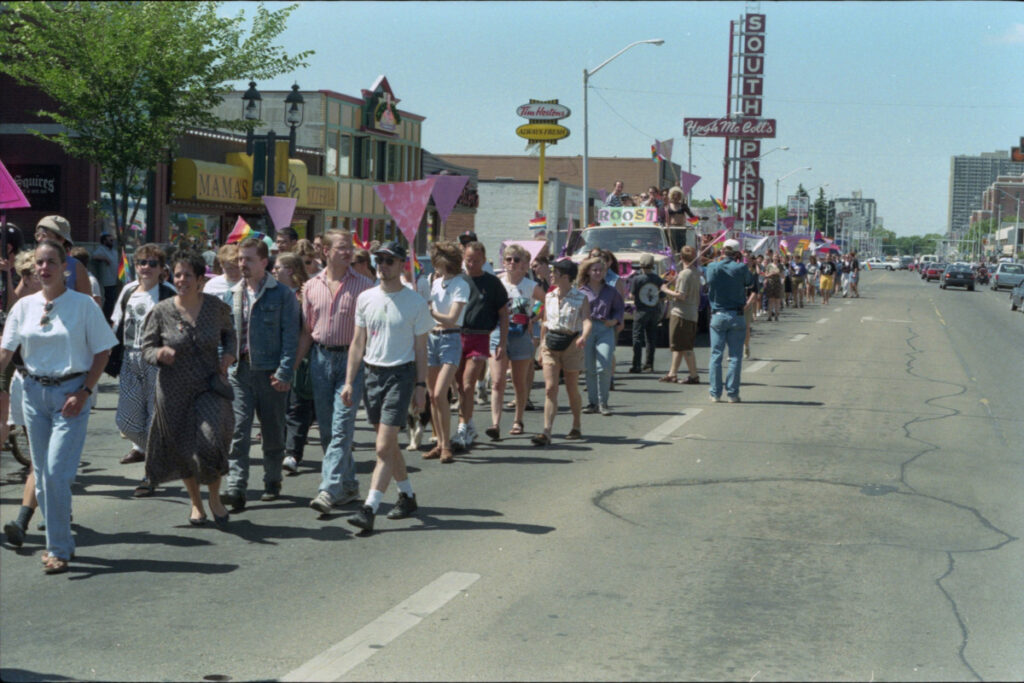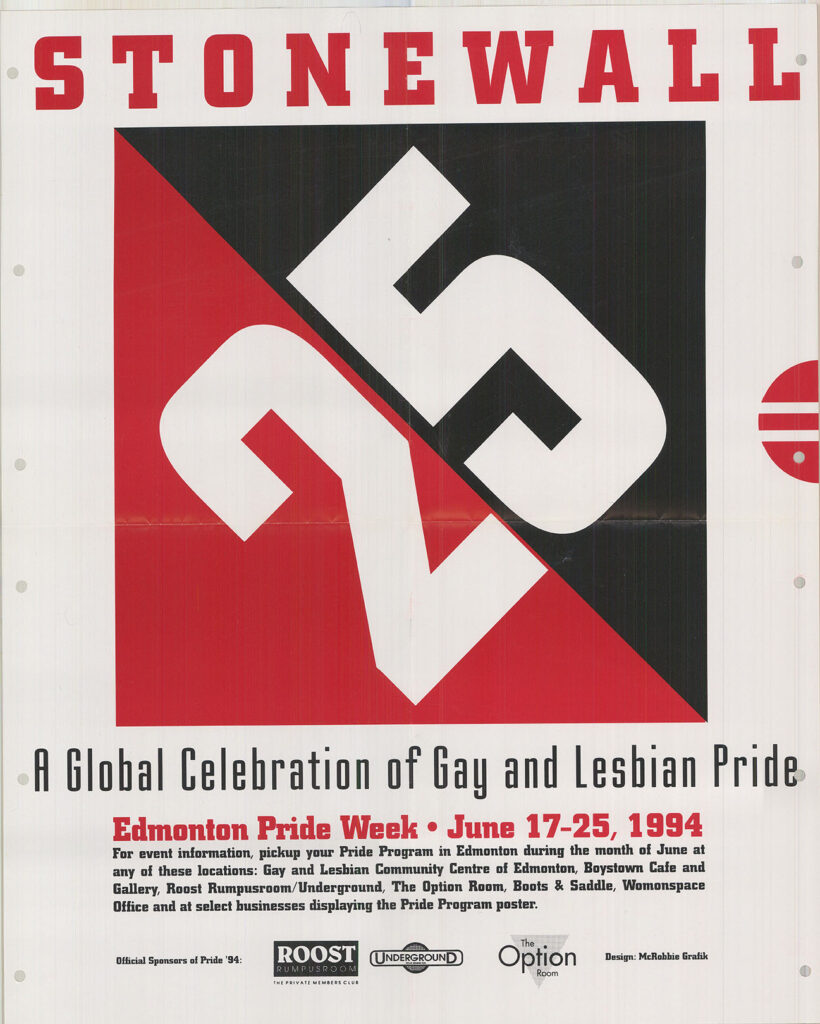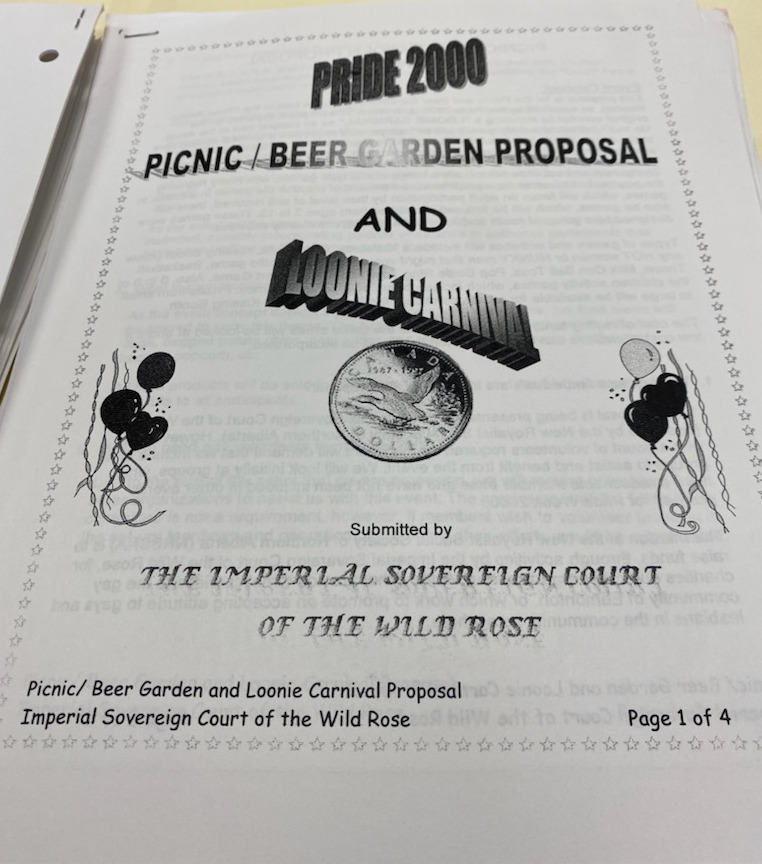
The First 21 years 1980 – 2001
Pride Celebration Background in Canada
On December 21, 1967 then Justice Minister Pierre Elliot Trudeau tabled Bill C-195, following several years of conversations with Vancouver drag queen and activist Ted Northe. In addition to making abortions legal in Canada it also decriminalized sodomy and gross indecency between adults 21 and over. With a federal election being held on June 25, 1968 Bill C-195 never made it into law and was re-introduced by the new Justice Minister under Prime Minster Trudeau as Bill C-150. On May 14, 1969 Bill C-150 was adopted by Parliament by a vote of 149 – 55. Bill C-150 received Royal Assent on June 27, 1969 one day before the Stonewall riot took place in New York City. LGBT Canadians celebrated their legal rights even as our U.S. siblings had to fight for decades before theirs were finally achieved in all 50 states.
In many Provinces across Canada we still faced some legal challenges particularly for youth who could not attend any LGBT events as the decriminalization only applied to adults 21 and over or consume alcohol until the Age of Majority was lowered to 18 in late 1971 and Alberta lowered the legal drinking age early 1972. But for many years drag queens still were being arrested by police for impersonation offences. In order to avoid arrest the queens had to have at least one article of male clothing on them, many using socks in their bras or wearing male underwear. It is believed that a Court ruling changed the interpretation of the law in the late 70s.
Many articles documenting the beginnings of Pride celebrations around the world erroneously state that Stonewall started the fueled the gay rights movement in Canada despite the fact that Canada had already decriminalized being gay or lesbian prior to Stonewall taking place. However, here in Canada we still did not have protections from discrimination in many areas of our lives until the Supreme Court of Canada declared in 1995 that sexual orientation was to be understood as an included protection. Alberta did not include sexual orientation in the Alberta Human Rights Act until 2009.
While our siblings south of us in the U.S. have used Pride as protests against Police sometimes brutally, enforcing archaic laws and also bringing demands for legalization – Canada’s Pride roots are built to celebrate our legal rights and to advocate for additional protections from discrimination. We must be proud of our position as a world leader in bringing LGBT rights to its citizens.
The first recognized Pride events in Canada were held in Toronto in 1972 where a picnic was held celebrating the decriminalization of homosexuality. In 1973 many cities across Canada held their first Gay Pride Week celebrating decriminalization while also bringing awareness to their community and advocating for equal protections under the law, something that was not fully extended by Bill C-150. These events wee held annually in some major cities with Edmonton joining them in 1980 and Calgary in 1987 with the forming of Project Pride Calgary.
Pride Celebrations in Edmonton
Edmonton’s first recognized Pride event was a Picnic In The Park thought to be held at Camp Harris, home of the 49th Battalion, The Loyal Edmonton Regiment Association. It was attended by about 75 people in 1980 to bring awareness to our community and celebrate the decriminalization of homosexuality with a campfire, picnic and softball game.
In 1981, in protest to the raid on the Pisces Spa by the Edmonton Police Service, a small group of 3 gay men and 3 lesbians put together a raft for the annual Sourdough Raft Race held during Edmonton’s Klondike Days to bring awareness of the injustice and overreach of the EPS.
1982 saw the first “official” Pride weekend – Pride Through Unity which included a drag show and buffet at Flashback sponsored by the Imperial Sovereign Court of the Wild Rose, a Unity Dance at the Phoenix Hall put on by the Gay Alliance Towards Equality (GATE) and a picnic and BBQ again held at Camp Harris. Organized in part as a reaction to the Pisces Spa raid a year earlier it looked to bring the community together and bring awareness to the challenges they still faced.
In 1983 GATE’s Gay Pride Week Committee expanded the weekend into a fuller week of events which didn’t include a Parade as such but for many years had small demonstrations and rallies as a part of the activities. The Pride events were held to bring awareness of our community, advocate for legislative changes that would bring us equal rights and protections and celebrate our achievements in these goals. As one organizer said it was a “chance to work with the straight community and become more unified.”
1984 saw Gay And Lesbian Awareness (GALA) take over coordinating Pride activities with input from almost all of the community organizations and businesses for many years and in 1996 after almost 12 years of repeated requests, was finally successful in getting the City Of Edmonton to officially recognize Pride through a Proclamation by then Mayor Jan Reimer.
The real beginnings of a Pride Parade began in the early 1990’s with a small group looking, some with bags on their heads, marched without a permit on Whyte Avenue from 103 Street to 105 Street to bring awareness of the lack of protections from discrimination. Michael Phair remembers holding a sign that may have read “Alberta is for all of us”.
In 1998 the Edmonton Pride Festival Society (EPFS) was formed after the Delwin Vriend case had dominated headlines in our city and took over the planning of the 1999 Pride Parade and events. Consisting of representatives from many of Edmonton’s community organizations and gay businesses serving on the Board, it looked to develop Edmonton Pride Week into a mainstream annual event.
In 2001 the EPFS expanded the format to a full Festival with Parade and acted as a promoter for individual Pride events by community groups. Edmonton’s Pride Week brought awareness, advocacy for rights and protections for our community and a celebration of what had been achieved and the pride we held.
The Pride movement in Edmonton has changed over time for the better but there are still areas where Pride has fallen short. In a statement made by Michael Phair – “First there was concern that it was mostly gay men, and then there was concern among women who didn’t know if they wanted to be a part of a movement that was dominated by men. Then there was a lot of concern about the drag community.” As the POC community breaks down its own internal barriers brought on by stigma and heteronormative cultural pressures in their own racial/ethnic communities Pride needed to evolve to ensure that it remained inclusive even when these barriers exist.
Pride is the most visible symbol of the global movement for 2SLGBTQ+ equality, celebrating progress, affirming the existence of 2SLGBTQ+ people, and demanding recognition of their basic human rights.
Pride celebrations are individual and different in every country around the world and many are structured on their individual histories. Change happens at different speeds and degrees and is often done at local levels. Pride is a reflection of each community individually.
References:
Stand By Our Colours
https://standingbyourcolours.ca/themes/bill-c-150
Pride Around The World – OutRight Action International
https://outrightinternational.org/PrideBrief
Lesbian, Gay, Bisexual and Transgender Rights in Canada – The Canadian Encyclopedia
https://www.thecanadianencyclopedia.ca/en/article/lesbian-gay-bisexual-and-transgender-rights-in-canada
Advances in Mental Health and Addiction
“The Effects of Intersectional Stigma and Discrimination on the Mental Well-Being of Black, LBQ, Female Youth 18–25 Years Old”
https://www.springer.com/series/13393
Criminal Law Amendment Act, 1968–69 – Wikipedia
https://en.wikipedia.org/wiki/Criminal_Law_Amendment_Act,_1968-69
What Happened at the Stonewall Riots? A Timeline of the 1969 Uprising – History.com
https://www.history.com/news/stonewall-riots-timeline
Pride History – Pride Toronto
https://www.pridetoronto.com/pride-toronto/history/
The History of Calgary Pride – Calgary Pride
https://www.calgarypride.ca/about/ourhistory/
Pride Timeline 1980 – 1999 – Edmonton Queer History Project
https://www.edmontonqueerhistoryproject.ca/1980-1999
Point of Pride: The evolution of the LGBTQ movement in Edmonton – The Toronto Star
https://www.thestar.com/edmonton/2019/06/08/point-of-pride-the-evolution-of-the-lgbtq-movement-in-edmonton.html
City of Edmonton Archives
Fonds MS-595 – Gay and Lesbian Archives of Edmonton fonds (GALA)
https://cityarchives.edmonton.ca/gay-and-lesbian-archives-of-edmonton-fonds-gala
![]()

Ron Byers
Ron Byers is a community leader and storyteller. Decades of work in Edmonton’s non-profit sector have given him an extensive resume of service as well as a unique viewpoint on our city and its history.
He has left his mark with many groups such as the Alberta’s oldest 2SLGBTQ+ organization the Imperial Sovereign Court of the Wild Rose where he was a Founding Member, the Pride Centre of Edmonton as part of developing its Aging With Pride Program and the Edmonton Pride Seniors Group. He also worked with the Edmonton Heritage Council and its Edmonton City As Museum Project (ECAMP) to bring stories of our Queer history to the public space. Ron also helped develop and monitor the Harm Reduction Program, PeerNPeer managed by the Queer & Trans Health Collective – QTHC (formerly Edmonton Men’s Health Collective).
He is also a positive speaker for HIV Edmonton, founder of Pride Edmonton and Rainbow Story Hub and the Cultural Events Lead for the 2030 Gay Games Bid Committee.

